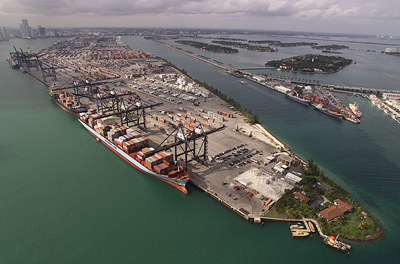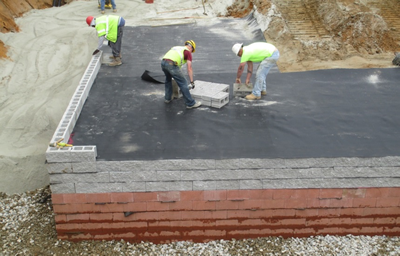
Following the historic and overwhelmingly bipartisan passage in the US House and Senate of the Water Resources Reform and Development Act (WRRDA), Geosynthetica’s Chris Kelsey talked to Boyd Ramsey, GSE Environmental’s Chief Engineer and the Geosynthetic Materials Association (GMA) Executive Council Chairman. GMA’s lobbying efforts over the past seven years—the period of time it took for a new water resources bill to develop—was instrumental in getting geosynthetics cited specifically in the legislation. It is a historic first for the industry in the United States.
**
GEOSYNTHETICA: The last water resources bill was passed seven years ago.
RAMSEY: Yeah. It’s taken us a long time to get here. That’s part of why I’m so excited about this. There aren’t a lot of opportunities to pass infrastructure legislation and get new information and innovative materials built into infrastructure.
GEOSYNTHETICA: You’ve been involved with GMA’s lobbying efforts for most if not all of the past seven years, and water resource legislation has been a major target. Rep. Heath Shuler even introduced language on geosynthetics in his opening statement to a transportation committee meeting on the next water resources bill back in February 2008.Has this been a steady push?
RAMSEY: It’s been kept up since then. We try to line up two agendas. We have the agenda of what we (GMA) want and the agenda of what is occurring in Washington. It doesn’t do us much good to work on something that is not going to result in a law or something that can pass. So I can’t say we’ve worked on it constantly for the last seven years, but it is certainly something that’s been on our list all that time.
When Congress didn’t pass the bill and adjourned, we slowed down. But as it became politically possible for a bill like this to pass, we ramped up our efforts.

GEOSYNTHETICA: The WRRDA bill, as I understand it, has removed the earmarking debate by taking what might have been called earmarks—projects the Corps had already approved and was simply awaiting funding on—and converted them to greenlighted work. The argumentative slate, essentially, is cleared and this bill focuses on streamlining and prioritizing future work and the ways projects are reviewed and implemented.
RAMSEY: The current mood of congress is generally opposed to earmarks. Earmarking used to be how things got done in Washington, but that’s no longer the case.
The Senate, now, is under pressure because they haven’t accomplished too much. But this is an area where they thought they could get everyone together. Senator Boxer, who heads up Environment and Public Works in the Senate, was willing to compromise on a whole lot of stuff. She took this on and deserves a lot of credit. She got it passed through the Senate the first time too.
GEOSYNTHETICA: That’s right, and by an 83 – 14 vote on the first try. The Senate passed that early version around May 2013 and in the fall the House passed its own version. A bipartisan, bicameral committee brought together the current version, which has been passed by both chambers of Congress.
RAMSEY: I would call this bill more “basic government,” and I am glad they are addressing infrastructure, and especially glad the congress has chosen to include geosynthetics.
It’s a lot like putting a new roof on your house. It’s not an option as to whether you replace it or not. You may not put on a slate marble roof, you may put on composite or something cheaper. But there are things included in this bill that have to be done.
The benefit of geosynthetics in this bill is that geosynthetics have been shown over and over by the GAO, the Corps and other organizations to be beneficial in making things cost less and last longer. If you have X dollars and you have something that allows you to get more out of those dollars, geosynthetics are a good idea. And the language promotes and requires the evaluation of innovative materiasl such as geosynthetics.
That’s what helped keep our language in there once it got in.

GEOSYNTHETICA: With this WRRDA push having reached a successful conclusion, what other issues are you and your Geosynthetic Materials Association (GMA) colleagues working on in Washington?
RAMSEY: Another tact we’ve worked on for several years is the Transportation Bill. Preferably a longer structured Transportation Bill. You get more done with the same amount of money when you have, say, a six-year transportation bill than if you patch together short-term extensions. You get more done and you get it done more economically if you let people have time to plan.
We are working with AASHTO, FHWA, and federal and state DOTs on that.
On the environmental side we are continuing to press on coal ash. It’s been more than five years since Kingston and there are still no federal regulations on disposal of coal ash and the protection of groundwater. That’s just wrong. I understand the politics, but there’s no way you can take this long.
Tentatively we expect some sort of announcement on this in January 2015.
READ MORE: Former GMA Executive Council Chairman John Henderson Reflects on Early Government Relations Work











